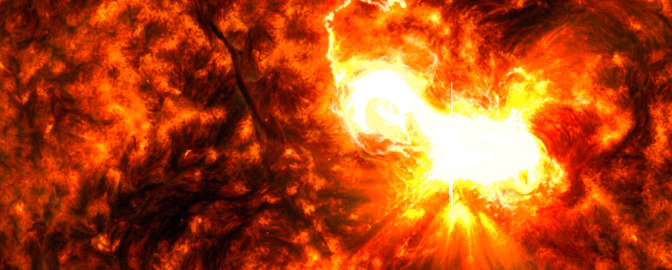All
All
Stories, updates, insights, and original analysis from The Planetary Society.
Extraterrestrial lights
How other worlds experience auroras.
What are planets made of?
A look at the compositions of terrestrial planets, gas giants, and ice giants in our Solar System.
Is Planet X/Planet Nine real?
Planet X and Planet Nine are planets that have, at one time or another, been thought to exist in our Solar System. Both were hypothesized to explain the orbital characteristics of smaller outer Solar System bodies.
Uranus' biggest unsolved mysteries
Distant, icy Uranus has puzzled scientists for decades. From its sideways spin to its mysterious magnetic field, the oddball world has many secrets waiting to be revealed.
Why the true colors of the planets aren't what you think
Cameras on our space probes act as proxies for our own eyes, but what they see isn't necessarily what our eyes would see.
China's plans for outer Solar System exploration
A Callisto impactor, a Uranus flyby, and a dedicated ice giant orbiter could be on China’s planetary exploration horizon.
Looking for long waves
Why JWST observes in the infrared.
Why aren't there more close-up images of Uranus and Neptune?
There aren't many close-up, high-resolution images of the ice giants Uranus and Neptune. The reason comes down to distance.
The scientific truth is out there
The real science of aliens, the policy implications of ET, and new views of worlds beyond our own.
Way out there
We’re always learning more about the worlds of the outer Solar System, and even those beyond.
Want more space? Speak up!
Detailed Mars maps, insights into the Venusian surface, and views of Uranian rings all have one thing in common: they don’t happen without public support for space.
Unusual Uranus! Moist Moon! Volcanic Venus!
A planet shows its pole, another shows possible volcanic activity, and the Moon keeps surprising us with more water.
Your guide to rings of the Solar System
Tour the rings of Jupiter, Saturn, Uranus, and Neptune, plus asteroids, a dwarf planet, and an exoplanet.
Outer worlds and outstanding science
Uranus is way out there, beckoning us to visit. And Cassini is the mission that won’t quit, even years after burning up.
Patience for Uranus
The road back to Uranus is paved with a complicated mix of science and politics.
A rose by any other name
What’s in a name? (Uranus’ name, specifically.)
Sights beyond the visible
See images your eyes wouldn’t normally be able to see, and learn about what these images can teach you.
Uranus' mysterious moons: why NASA wants to explore Ariel and Miranda
Are the moons of Uranus "relic" ocean worlds like Ceres or active ocean worlds like Enceladus? A proposed flagship mission aims to find out.
First steps and big leaps
Technological innovation is a big part of the fun of space exploration, and you can help make it happen.
A hazy shade of winter
A Martian explorer hunkers down for winter and a planet’s haze is explained.


 Explore Worlds
Explore Worlds Find Life
Find Life Defend Earth
Defend Earth


 Sun
Sun Mercury
Mercury Venus
Venus Earth
Earth Mars
Mars Jupiter
Jupiter Saturn
Saturn Uranus
Uranus Neptune
Neptune Small Bodies
Small Bodies
















